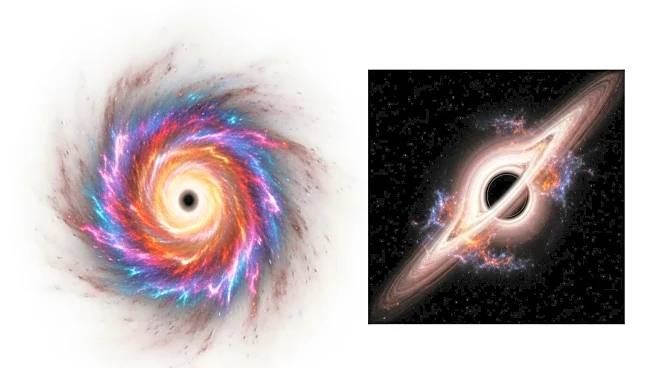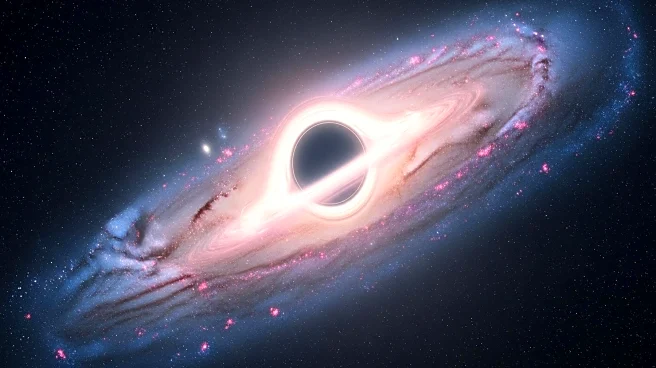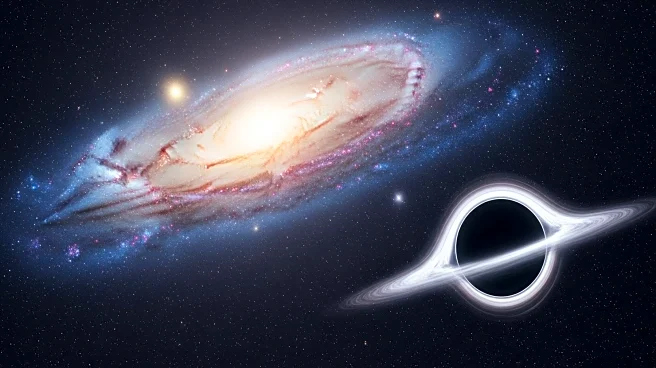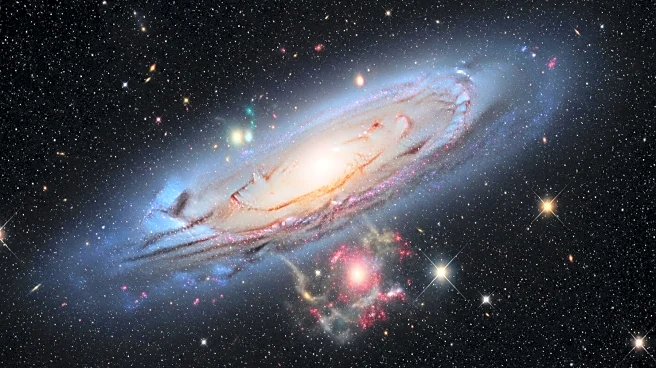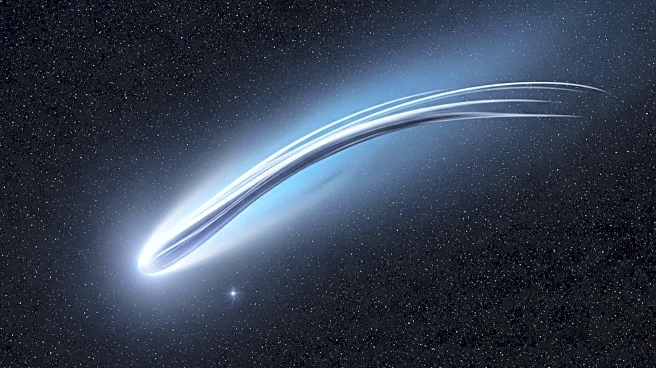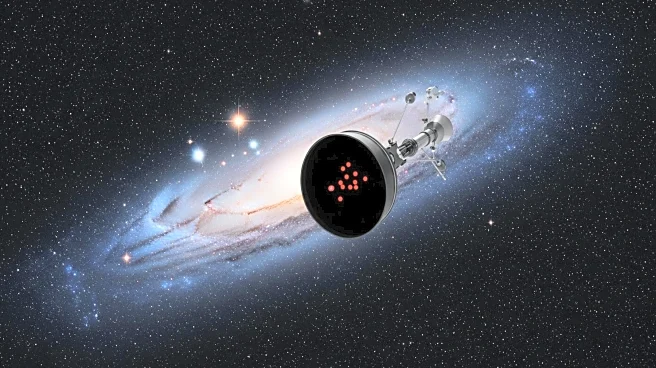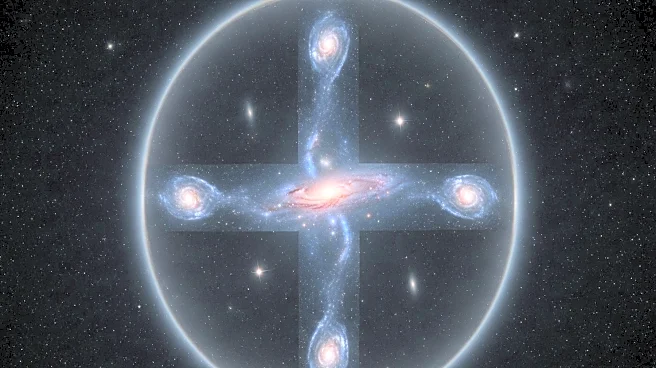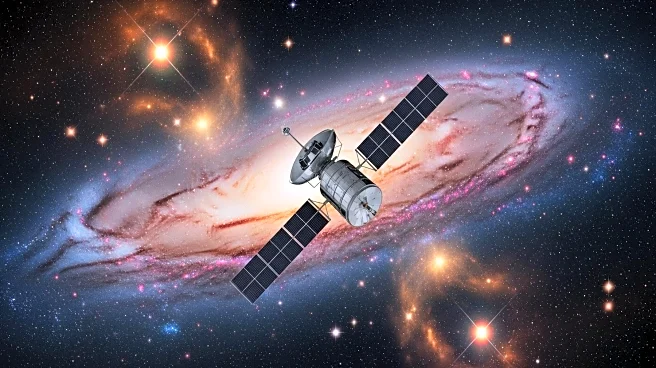What's Happening?
NASA's Chandra X-ray Observatory has discovered a black hole growing at an unprecedented rate, exceeding the Eddington Limit. Located 12.8 billion light-years away, the black hole is powering a quasar that outshines entire galaxies. The rapid growth challenges existing theories about black hole formation and suggests alternative processes may be at play. The discovery provides insights into the early universe and the conditions that allow black holes to reach massive sizes quickly.
Why It's Important?
The findings have significant implications for understanding the formation of the first generation of black holes and the evolution of the universe. The rapid growth rate suggests that black holes can accumulate mass faster than previously thought, potentially altering models of cosmic evolution. This research may also shed light on the mechanisms behind quasar formation and the role of black holes in galaxy development. The study contributes to the broader field of astrophysics by challenging existing paradigms and prompting new lines of inquiry.

